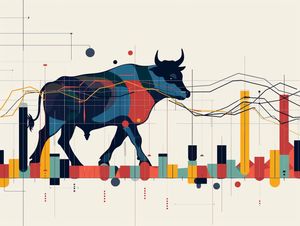What is a Stock?
A stock, also known as equity, is a security that represents fractional ownership in a corporation. Imagine owning a part of a company you admire, like a tech giant or a local favorite. That's the basic idea behind a stock. When you buy a stock, you're purchasing a share (or a few shares) of ownership in that company. This makes you a partial owner, although usually in a very small way. Think of it like owning a single grain of sand on a massive beach.
Ownership and Fractional Shares:
-
Buying a stock grants you partial ownership in a company. Each company divides its ownership into tiny pieces called shares. When you buy a share, you're essentially buying a slice of that company's pie.
-
The number of shares you own determines your ownership stake. The more shares you own, the larger your ownership percentage (though it's usually a very small fraction for publicly traded companies with millions of shares outstanding).
The Stock Market: A Marketplace for Ownership
-
Stocks are bought and sold on a marketplace called the stock market. This can be a physical exchange like the New York Stock Exchange (NYSE) or a more modern electronic platform.
-
Investors use brokers to buy and sell shares on their behalf.
Stock Price Fluctuations:
-
The price of a stock is constantly changing based on supply and demand. Here's what affects the price:
-
Company Performance: A company's financial health, future prospects, and overall market sentiment all influence its stock price. Strong earnings reports and positive growth outlooks typically drive the price up, while financial troubles or negative news can cause it to fall.
-
Supply and Demand: Just like any good, the price of a stock rises when there are more buyers than sellers (high demand) and falls when there are more sellers than buyers (high supply).
-
Benefits of Owning Stock:
-
Potential for Capital Appreciation: The main reason people buy stocks is for the hope that the price will increase over time. This is called capital appreciation. If a company thrives and its stock price goes up, you can potentially sell your shares for a profit.
-
Dividends: Some companies share a portion of their profits with shareholders through dividends, which are like cash payouts per share owned. Not all companies pay dividends, but they can be a source of passive income for investors.
Risks of Owning Stock:
-
Stock prices can fluctuate significantly. There's always the risk that a company's performance could falter, causing the stock price to decline. In the worst-case scenario, a company could go bankrupt, and shareholders might lose their entire investment.
-
The stock market is inherently risky. Overall market conditions can also impact stock prices. Economic downturns, for example, can cause broad stock market declines.
In Conclusion:
Stocks are a form of security that represent ownership in a company, and the stock market is where that ownership is traded. While stocks offer the potential for growth and income, they also come with inherent risks. Understanding these aspects is crucial before venturing into the exciting world of stock investing.



